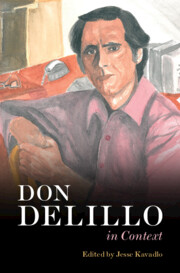Book contents
- Don DeLillo In Context
- Don DeLillo In Context
- Copyright page
- Contents
- Contributors
- Acknowledgments
- Abbreviations
- Introduction: Context, Content, Conflict
- Part I Places
- Chapter 1 New York City
- Chapter 2 The Bronx
- Chapter 3 The American Southwest
- Chapter 4 The World
- Part II History and Politics
- Part III Media and Pop Culture
- Part IV Literary Contexts
- Part V Material Contexts
- Part VI Social and Cultural Constructions
- Part VII Writing and Writers
- Further Reading
- Index
- References
Chapter 1 - New York City
Reassessing the Topography of New York City in Don DeLillo’s Fiction
from Part I - Places
Published online by Cambridge University Press: 19 May 2022
- Don DeLillo In Context
- Don DeLillo In Context
- Copyright page
- Contents
- Contributors
- Acknowledgments
- Abbreviations
- Introduction: Context, Content, Conflict
- Part I Places
- Chapter 1 New York City
- Chapter 2 The Bronx
- Chapter 3 The American Southwest
- Chapter 4 The World
- Part II History and Politics
- Part III Media and Pop Culture
- Part IV Literary Contexts
- Part V Material Contexts
- Part VI Social and Cultural Constructions
- Part VII Writing and Writers
- Further Reading
- Index
- References
Summary
DeLillo’s fiction acts as a commentary on the human condition and its relation to spatial stimuli. New York City represents a fixed point of reference that the author revisits and continuously extracts meaning from its inhabitants’ movement throughout the cityscape and the architectural constructs that affect their lives.
- Type
- Chapter
- Information
- Don DeLillo In Context , pp. 9 - 14Publisher: Cambridge University PressPrint publication year: 2022



